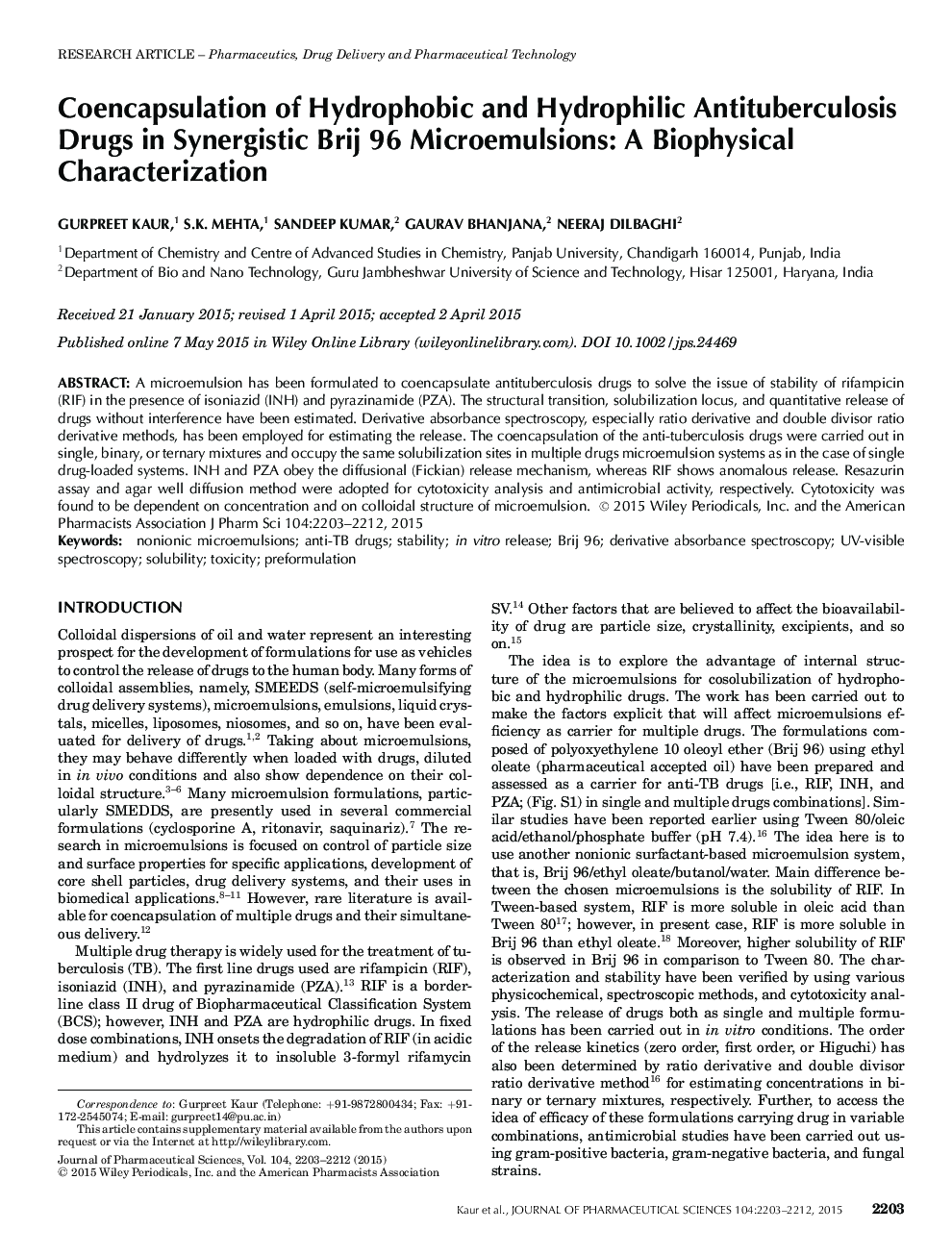| Article ID | Journal | Published Year | Pages | File Type |
|---|---|---|---|---|
| 2484516 | Journal of Pharmaceutical Sciences | 2015 | 10 Pages |
Abstract
A microemulsion has been formulated to coencapsulate antituberculosis drugs to solve the issue of stability of rifampicin (RIF) in the presence of isoniazid (INH) and pyrazinamide (PZA). The structural transition, solubilization locus, and quantitative release of drugs without interference have been estimated. Derivative absorbance spectroscopy, especially ratio derivative and double divisor ratio derivative methods, has been employed for estimating the release. The coencapsulation of the anti-tuberculosis drugs were carried out in single, binary, or ternary mixtures and occupy the same solubilization sites in multiple drugs microemulsion systems as in the case of single drug-loaded systems. INH and PZA obey the diffusional (Fickian) release mechanism, whereas RIF shows anomalous release. Resazurin assay and agar well diffusion method were adopted for cytotoxicity analysis and antimicrobial activity, respectively. Cytotoxicity was found to be dependent on concentration and on colloidal structure of microemulsion.
Keywords
Related Topics
Health Sciences
Pharmacology, Toxicology and Pharmaceutical Science
Drug Discovery
Authors
Gurpreet Kaur, S.K. Mehta, Sandeep Kumar, Gaurav Bhanjana, Neeraj Dilbaghi,
